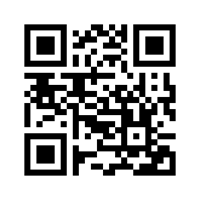
Goddard Space Flight Center, Greenbelt, Maryland 20771
ENGINEERING COLLOQUIUM
Monday, October 31, 2022 / Lecture starts at 3:30 PM On line
John Hagopian
"Blacker than Black" - Carbon Nanotube Applications for NASA
ABSTRACT -- John Hagopian and Stephanie Getty developed "Blacker than Black" Carbon Nanotubes (CNT) under the NASA Internal Research and Development (IRAD) program as Innovators of the Year in 2010. CNT are the darkest materials and have a multitude of applications that have been investigated under NASA IRAD, Picasso and Small Business Innovative Research (SBIR) funding. The nanotubes have near ideal emissivity can controlled to be ultrashort at 6 microns or greater than 20 microns and dark over the 0.25 to 130 micron wavelength range. They can absorb photons, emit electrons, emit photons and even sniff out chemicals . . .
Today's talk will focus on work John Hagopian has done under the SBIR program. This work includes development of dark short nanotube coatings for use on the PACE Ocean Color Instrument entrance slit, reflective CNT apodizer mirrors for use in Coronagraph test beds at NASA Ames, GSFC and the Space Telescope Science Institute and are key components for Exoplanet Research. Apodizers or Shaped Pupil Masks are made in the image of the telescope pupil which is relayed through a coronagraph that has already blocked out the on-axis light from a star. The apodizer nanotube pattern scavenges the diffracted light from the telescope structures that would otherwise swamp the light from the companion planet. One of our apodizers was recently tested on the JPL testbed and achieved 1.6 x 10-9 contrast in monochromatic tests. We also developed the ability to grow nanotubes on glass and develop CNT transmissive apodizers for the Gemini Planet Imager (GPI) upgrade. Apodizers maintained low wavefront error, high reflection or transmission and excellent absorption in the precisely patterned regions to scavenge diffracted light from telescope structures. Apodizer substrates and coatings had to be resilient to exposure to high temperatures and corrosive process gases, which were extreme technical challenges. Work also included improving adhesion and developing processes to decrease the growth temperature from 750 C to 600 C to allow deposition on aluminum substrates such as Lyot Stops for GPI. Rounding out SBIR work; we worked with the detector branch to create a backup nanotube based chemical sensor chips for Covid-19 detection compatible with a NASA E-Nose platform primarily developed by NASA Ames with funding from HHS stemming from a NASA at work Proposal he submitted. NASA STTR work has also revealed that carbon nanotubes can be electrically stimulated to emit infrared photons or when functionalized with quantum dots quench fluorescence.
SPEAKER -- John Hagopian is a Senior Optical Physicist at the Goddard Space Flight Center in the Optics Branch. He served as alignment and test engineer for the Far Infrared Spectrometer on the Cosmic Background Explorer (COBE), Lead on the Broad Band X-Ray Telescope and Composite Infrared Spectrometer (CIRS) on Cassini mission to Saturn, the Corrective Optics Space Telescope Axial Replacement (COSTAR) for the HST first servicing Mission . Mr. Hagopian served as the Integrated Science Instrument Module (ISIM) and Mission Optical Systems Lead for the James Webb Space Telescope also as Telescope Alignment Lead for ATLAS Lidar and Observatory Alignment Lead for RST. His area of expertise is optical alignment, integration, and test. Much of today’s talk will focus on work done on NASA SBIR "Proximity Glare Suppression Using Carbon Nanotubes" done by his company Lambda Consulting/Advanced Nanophotonics. He has BA's in Physics and Astronomy and a MA in Nuclear Engineering from the University of Virginia and has been at GSFC since 1982.
Colloquium Committee Sponsor: Brent Warner, NASA-GSFC, 301/286-8568
In Two Weeks: "Magnetic Levitation (Maglev) Technology", Ian Rainey, Northeast Maglev
Engineering Colloquium home page: https://ecolloq.gsfc.nasa.gov